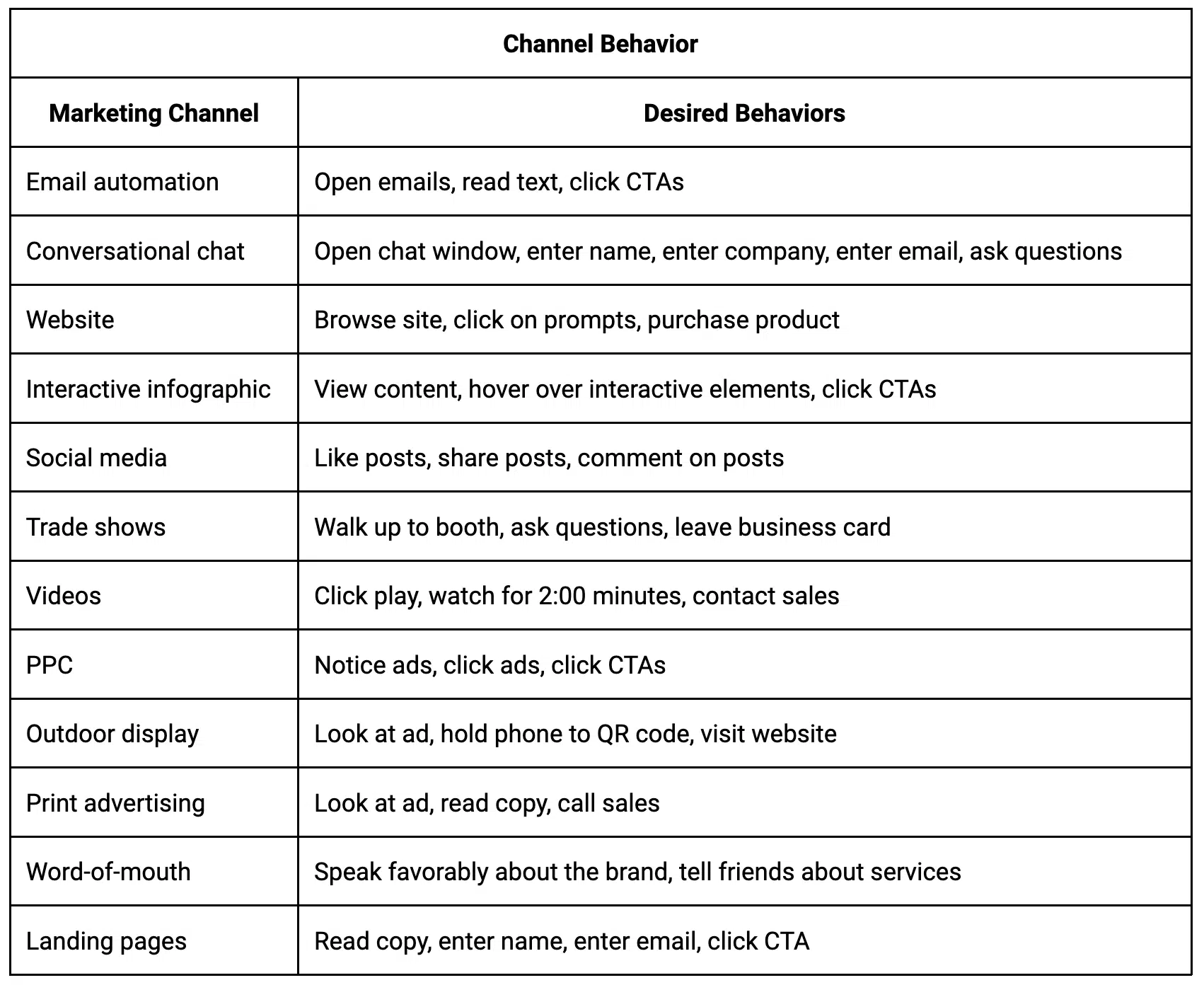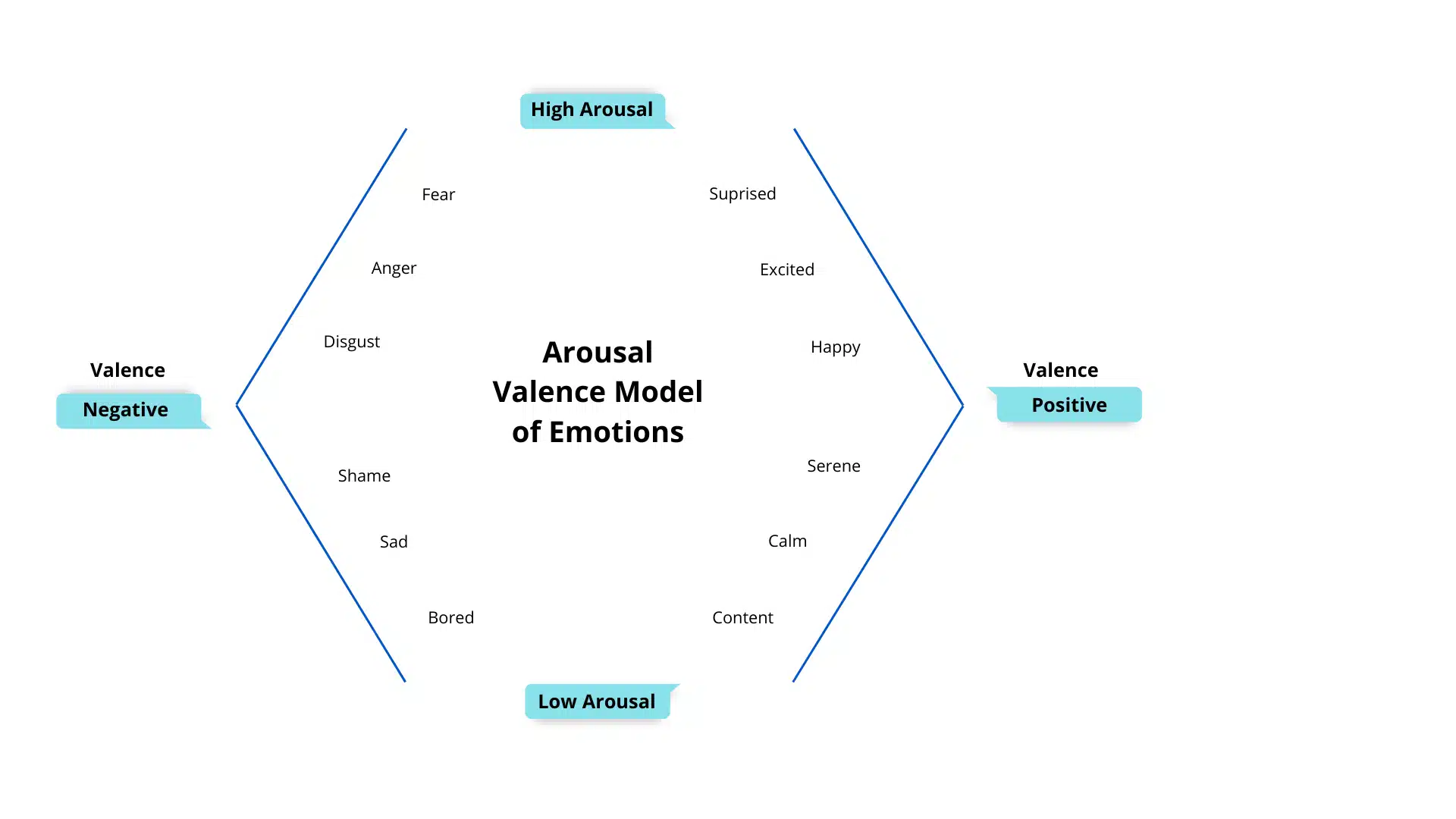Top tips for building a successful brand strategy in 2024 and beyond: Part 2
In this second part of a two-part feature, learn more about the relationship between brand and behaviors, emotions and feelings.
In the second part of this two-part feature, Jade Bunke discusses triggering the right customer behaviors, the differences between emotions and feelings and how to future-proof your brand strategy. The first part is here.
5. Identify and trigger behaviors
Crafting a unique identity is only the beginning. You need action. Specifically, you need your brand to trigger behaviors that help you get closer to achieving your goal. Have you mapped the behaviors you want your customers to take across your marketing channels?
Think about behaviors across every group your brand touches, including customers, employees, suppliers, partners, competitors and beyond. This is where brand building gets complicated. This article only discusses the behaviors you want from your customers to keep things manageable.
What do you want your customers to do? What actions do you want to prompt? Do you want your customers to click, call and advocate for your brand? As part of the strategic brand-building process, you must map desired behaviors across each channel you plan to use.
Yes, you’re not building a go-to-market plan at this point. Still, you need to identify certain behaviors essential for maximizing the success of your strategy. As such, ask yourself: what behaviors help you achieve your goal? What behaviors help you achieve your objectives?
As you start to determine which actions you want your customers to take, you need to link different behaviors to each marketing channel your company plans on using.
The following table provides a simplified version for building your brand strategy.

As you transition to building your go-to-market strategy, you can use the above table to identify different behaviors among all of your micro-segments for you want to engage with your brand.
6. Understanding emotions and feelings
Almost every marketer discusses creating an emotional connection between the brand and the customer. The sentiment is correct.
But do you identify the emotions you want to elicit in advance? Do you make the distinction between feelings and emotions? And perhaps most importantly, are you linking customer emotions to different marketing assets?
Emotional marketing is complicated because humans are complex. And the source of emotions, the human brain, is the most complicated thing in the universe. However, taking a more nuanced approach to emotional marketing is important for creating a deep connection between your customers and your brand.
The first step is to make a distinction between emotions and feelings. While researchers debate the demarcation between feelings and emotions, let’s adopt Antonio Damasio’s framework in his groundbreaking book “Descartes’ Error: Emotion, Reason and the Human Brain.”
Demasio, a neuroscientist and professor of psychology, philosophy and neurology at the University of Southern California, states:
“As body changes take place, you get to know about their existence and you can monitor their continuous evolution. You perceive changes in your body state and follow their unfolding over seconds and minutes. That process of continuous monitoring, that experience of what your body is doing while thoughts about specific contents roll by, is the essence of what I call a feeling. If an emotion is a collection of changes in body state connected to particular mental images that have activated a specific brain system, the essence of feeling an emotion is the experience of such changes in juxtaposition to the mental images that initiated the cycle.”
– Descartes’ Error: Emotion, Reason and the Human Brain
As you can see, emotions are unconscious bodily responses to stimuli. Feelings, on the other hand, represent your conscious perception of your emotions. With this understanding, let’s look at what’s happening inside the body during an emotional response.
Imagine you’re walking on a hike, and a visual stimulus captures your attention. In this case, it’s a snake. Immediately, your brain goes to work and undergoes complex physiological processes, starting with the visual processing system routing information to the amygdala — a part of the brain that’s associated with fear.
The amygdala then sends signals to the hypothalamus, a critical region for autonomic responses. The hypothalamus triggers the release of stress hormones, which increases your heart rate and dilates your pupils. At this point, your muscles are tense and your breathing rate increases. All of this happens below the level of consciousness.
This is an emotional response. After your body undergoes these physiological responses to the visual stimulus, you finally become aware of what’s happening. You don’t know how to describe everything that’s automatically happening inside your body, but you feel something. You feel fear. Your perception of your emotional response is your feeling.
Dig deeper: 7 tips for building brand identity
7. Identifying emotions and feelings
Now that you better understand emotions and feelings, you’re more prepared to determine the emotional response you want to elicit from your customers. Often, you might want to trigger different emotional responses from different campaigns at different times throughout the customer journey.
As part of the brand-building process, you want to connect specific emotions and feelings to the overall brand while examining desired emotional responses to the behaviors described in the Channel Behavior table. What bodily response do you want to elicit when a customer sees an ad? How do you want a customer to feel towards a particular campaign?
To provide you with a point of reference, the following diagram can be used for identifying emotions in terms of arousal and valence.

In the above diagram, valence describes an emotion in positive or negative terms, whereas arousal refers to its intensity. Using the above chart, you can more easily identify which emotions you want your customers to experience when exposed to different brand assets.
8. Living the brand
As you build your brand, you must consider how your workforce lives the brand promise every day. Your brand attributes must come to life by the actions of your workforce before it can flourish in the marketplace. To maximize the success of your brand strategy, you must embed it within an internal culture that influences the perceptions and behaviors of your entire workforce.
This is important because every employee’s behavior is a reflection of your brand. For example, the tone with which a receptionist answers the phone represents your brand. Even the salesperson speaking casually to a customer after hours reflects your brand culture. Even employee conversations at the watercolor are part of your brand. In short, your brand represents everything that’s connected to your business.
The brand extends far beyond the marketing department, according to Philip Kotler, Professor of International Marketing at Northwestern University. The brand is an “organizing principle for the whole offering,” as Kotler put it. In other words, your brain is a living creation that influences the thoughts and behaviors of everything else associated with it.
Crafting a future-ready brand strategy
You’ve established your goal. You’ve identified your objectives. You’ve incorporated your company’s values and established brand attributes. And now you’ve identified the behaviors you want to elicit across different marketing channels.
Are you ready to introduce your masterpiece to the world? Do you feel like Rembrandt, Degas or Van Gogh? After all, you just created a work of art that’s built for 2024 — and beyond.
Dig deeper: It’s time to teach AI about your brand
Contributing authors are invited to create content for MarTech and are chosen for their expertise and contribution to the martech community. Our contributors work under the oversight of the editorial staff and contributions are checked for quality and relevance to our readers. MarTech is owned by Semrush. Contributor was not asked to make any direct or indirect mentions of Semrush. The opinions they express are their own.
Related stories